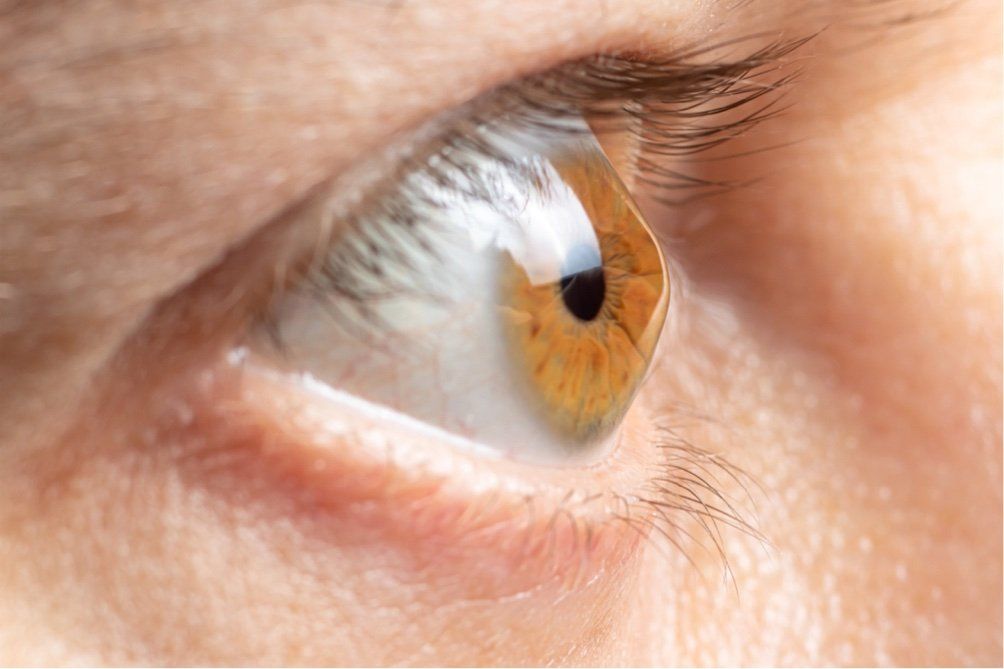WHAT IS KERATOCONUS?
Keratoconus is when the normally dome shaped cornea thins and gradually becomes cone shaped.
Collagen fibers in the eye help hold the cornea in place. When these fibers become weakened, they can no longer hold their shape and the cornea becomes more cone-like.
As the cornea changes in shape, it changes the way light rays are focused on the retina. As a result, vision becomes blurry and distorted.
WHAT CAUSES KERATOCONUS?
Although keratoconus has been studied for years, the exact cause is unknown. In some cases, keratoconus appears to be genetic. About 10% of patients have an affected parent. It is also thought that a decrease in protective antioxidants and an increase in free radicals is a cause.
Keratoconus is also thought to be linked to:
- Age. Keratoconus often begins in the late teen years and symptoms can progress slowly over the course of 10 to 20 years. While it can show up earlier in childhood or after age 40, it is much less common to develop keratoconus at these times.
- Eye rubbing. Rubbing your eyes too often or too hard can scratch or damage the cornea and lead to further thinning. Eye rubbing has also been linked to accelerated progression of keratoconus.
- Chronic Eye Inflammation. Chronic inflammation from allergies or irritants can contribute to the breakdown of corneal tissue and may result in developing keratoconus.
- Ultraviolet Light. Overexposure to the sun’s UV rays can cause the cornea to be susceptible to oxidative damage. It is believed that this contributes to the development or worsening of keratoconus.
- Genetics. As well as a family history of keratoconus, certain patients with systemic disorders, such as Down syndrome, are at a higher risk of developing keratoconus.
KERATOCONUS SYMPTOMS
Schedule an eye exam
TREATING KERATOCONUS
Treatment for keratoconus depends on the severity of your condition and how quickly the condition is progressing. The goal of treatment is to slow the progression of the disease and to improve your vision.
Glasses and Contacts
In the early stages of keratoconus, your vision can often be corrected with glasses or soft contact lenses.
As keratoconus progresses, specially fitted contacts might be needed to provide better vision. These lenses include gas permeable lenses, hybrid lenses or scleral lenses.
Scleral Contact Lenses
For most people with keratoconus, a scleral lens is the best treatment option for better vision. A scleral lens is a large diameter gas permeable lens that covers the entire cornea and sits on the less sensitive part of the eye called the sclera. This design provides a smooth refracting surface and minimizes discomfort by reducing pressure on the cornea.
Scleral lenses also have a fluid layer that helps keep the eye hydrated. The fluid layer also works to smooth out any irregularities in the shape of the cornea which helps improve vision.
Corneal Cross-Linking
Corneal cross-linking is a procedure that is very effective in slowing the progression of keratoconus. During the procedure, the cornea is saturated with riboflavin (vitamin B2) eye drops and treated with ultraviolet light. This physically hardens the cornea which helps prevent further changes in its shape.
Intacs
Intacs are small plastic arcs that are inserted into the eye. Intacs flatten the cone shape of the cornea with keratoconus, bringing it closer to its original shape. Intacs will improve vision but, many times, you will still need glasses or contacts for clear vision.
Corneal Transplant
In a few people with keratoconus, the cornea will eventually become too scarred or wearing contact lenses will become too difficult. In these people, corneal transplant surgery may be needed.

